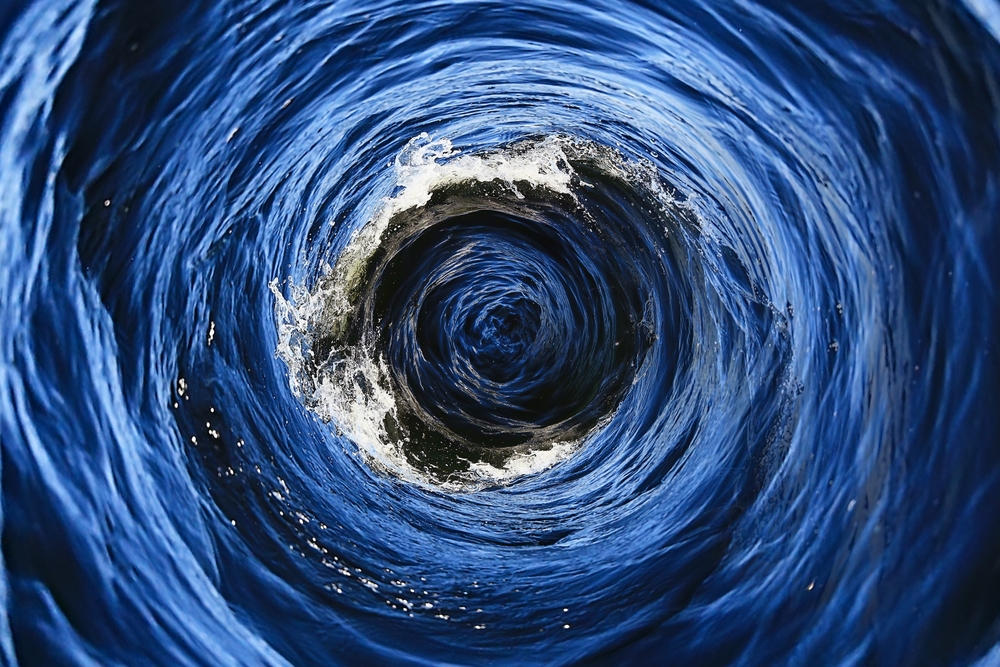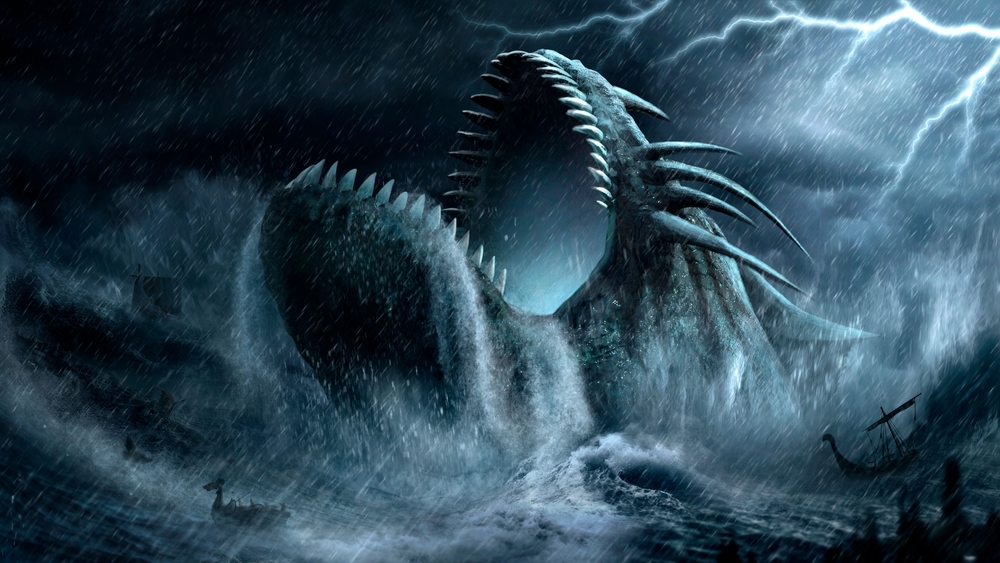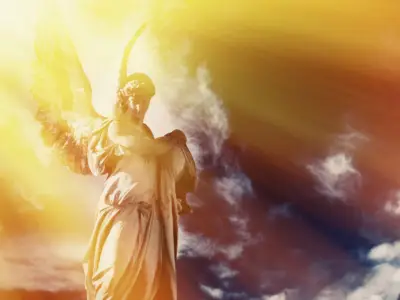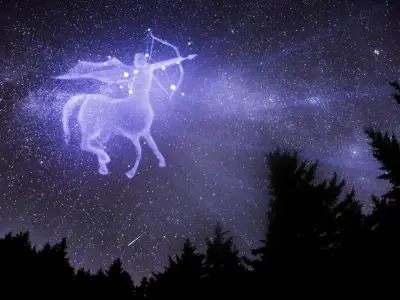Whether you’re a student of mythology, a lover of epic tales, or simply curious about the mysterious characters of the ancient world, you’ve likely heard the names Scylla and Charybdis.
These two figures from Greek mythology are famous for their roles in Homer's "The Odyssey," where they pose deadly challenges to the hero Odysseus on his journey home. Let’s explore who Scylla and Charybdis were, what they represent, and why their story continues to captivate.
Jump to:
Who Are Scylla and Charybdis?

Scylla and Charybdis are often mentioned together because their dangers are located so close to each other, presenting a formidable challenge to any sailor trying to navigate the narrow strait. But who exactly are these mythical creatures?
What is Scylla?
Scylla, often referred to in Greek mythology, is depicted as a monstrous sea creature. Legend describes her as having multiple heads and ferocious dogs protruding from her body, each head ready to snatch a sailor from his ship. Her origin story varies, with some myths suggesting she was a beautiful nymph transformed into a monster due to a jealous rival's poison.
What is Charybdis?
On the other side, Charybdis is sometimes personified as a massive whirlpool or as a monster lurking underwater, continuously swallowing massive amounts of water and then spouting it out, creating a deadly whirlpool capable of dragging a whole ship underwater. According to some stories, Charybdis was the daughter of Poseidon and Gaia and was cursed by Zeus for her excessive use of water.
Scylla and Charybdis in The Odyssey

In Homer’s epic, "The Odyssey," the hero Odysseus must steer his ship through the narrow channel flanked by Scylla on one side and Charybdis on the other. This part of his journey is particularly dangerous because avoiding one monster means coming close to the other.
Did Odysseus Choose Scylla or Charybdis?
Faced with a dilemma, Odysseus chooses to pass closer to Scylla as advised by the sorceress Circe, deeming it the lesser of two evils. While Scylla does snatch some of his men, this option allows the majority of his crew and his ship to survive, unlike the total devastation that Charybdis would have caused.
Scylla and Charybdis Myths

Scylla and Charybdis appear in various myths beyond the well-known tale from Homer's "The Odyssey." Here are three other stories featuring these formidable creatures, each highlighting different aspects of their mythological roles and symbolism.
Jason and the Argonauts
In the epic saga of Jason and the Argonauts, as they pursue the Golden Fleece, they too must navigate the perilous waters where Scylla and Charybdis reside. With the help of Thetis, the sea nymph and mother of Achilles, the Argonauts pass through safely, narrowly avoiding the deadly whirlpool of Charybdis and the ravenous reach of Scylla. This myth emphasises the theme of divine intervention and the importance of celestial favour in overcoming challenges.
Aeneas and the Trojan Fleet
Another myth involving these monsters comes from Virgil’s "Aeneid," where the Trojan hero Aeneas encounters Scylla and Charybdis during his quest to found Rome. Unlike Odysseus, Aeneas does not confront the monsters directly but hears of their horrors from a fellow traveller, which starkly reminds him and his crew of the dangers in their journey to a new homeland. This story highlights the sense of foreboding that accompanies epic quests.
The Transformation of Scylla
There are several versions of the myth concerning how Scylla turned into a monster, but one popular version involves the sea god Glaucus and the sorceress Circe. Glaucus fell in love with Scylla, but his feelings were not reciprocated. In desperation, he sought help from Circe, who, in a twist of events driven by her own love for Glaucus, poisoned the water where Scylla bathed, transforming her into a terrifying beast. This tale serves as a reminder of how jealousy and unrequited love can lead to catastrophic outcomes.
Symbolism and Impact
Scylla and Charybdis embody deep symbolic meanings that have resonated through the ages. Their stories represent life lessons about choice, consequence, and the nature of challenges.
Scylla and Charybdis as Metaphors
Scylla and Charybdis have come to symbolise the idea of choosing between two evils, often echoed in literature, politics, and everyday decision-making. The phrase "between Scylla and Charybdis" has become synonymous with being stuck between a rock and a hard place, highlighting dilemmas where avoiding one danger may lead to encountering another.
Navigational Hazards Transformed into Life Lessons
From a navigational perspective, Scylla and Charybdis remind us that the sea—an unpredictable and often dangerous path—requires respect and wisdom to cross. Similarly, life demands a careful balancing act when faced with important decisions, requiring a blend of courage, wisdom, and foresight.
Modern Relevance of Ancient Challenges
The story of navigating between these two monsters is a powerful metaphor for the modern age, where people must often make choices with no ideal outcomes. The legend endures because it encapsulates a fundamental aspect of the human condition: the necessity of making choices under pressure and living with the consequences of those choices.
Frequently Asked Questions About Scylla and Charybdis
What Does 'Between Scylla and Charybdis' Mean?
To be "between Scylla and Charybdis" means to be caught between two dangers, choosing the lesser of two evils. This idiom has been used in literature and speeches throughout history, highlighting dilemmas where all options are undesirable.
Did Odysseus Not Mention Scylla to His Crew?
Interestingly, Odysseus chose not to warn his crew about Scylla ahead of their encounter. This strategic decision was based on his concern that knowing the imminent danger might cause his men to panic and potentially abandon their posts, leading to even greater disaster.
Why Is Scylla Considered Evil?
Scylla is often depicted as evil in myths primarily due to her monstrous form and her actions—snatching and devouring sailors. However, her transformation into a monster was not of her own doing but a result of a curse, which adds a layer of tragedy to her character.
Which Is Worse, Scylla or Charybdis?
While both Scylla and Charybdis pose severe threats, ancient sailors often considered Charybdis to be the more deadly of the two, as her whirlpool could swallow the entire ship, leading to certain death, whereas Scylla posed a more selective threat, taking only part of the crew.
Why Does Circe Hate Scylla?
Circe’s hatred for Scylla stems from jealousy in some versions of the myth. When the sea god Glaucus preferred Scylla over Circe, the sorceress's jealousy led her to transform Scylla into a monster as a form of revenge.
Why Was Scylla Cursed?
In one prominent myth, Scylla was cursed because of Circe’s jealousy. Circe used her magical powers to poison the water where Scylla bathed, transforming her into a monstrous creature with multiple heads and dog-like appendages.
What Gender Is Scylla?
In Greek mythology, Scylla is depicted as female. Her stories often focus on her origins as a beautiful nymph before her transformation into a monstrous creature.
What Race Is Scylla?
Mythologically, Scylla is considered a nymph and later a monster, with no specific race attributed to her. Her depiction is purely fantastical, originating from Greek mythology.
Was Scylla a Human?
Initially, Scylla was a beautiful nymph, which is a divine spirit of nature imagined in a semi-divine and semi-human form. She was not human but rather a mythological creature with divine attributes.
Who Killed Charybdis?
Mythology does not typically speak of Charybdis being killed; she is more often noted for her transformation into a whirlpool rather than a creature that could be slain.
Is Scylla a Siren?
Scylla is not a siren. While both are mythical creatures of the sea, sirens are creatures that lure sailors to their deaths with their enchanting voices, whereas Scylla physically attacks ships that venture too close.
What Did Scylla Look Like?
Scylla is described as having a body that is part monstrous and part beautiful, typically depicted with six heads on long, snaky necks, each head having a ring of savage dog heads around her waist.
Is Charybdis a Whirlpool or a Monster?
In Greek mythology, Charybdis is both. She was initially a monster who was later transformed into a giant whirlpool as part of her curse.
Is Scylla a Kraken?
Scylla is not a Kraken. While both are sea monsters in folklore and myth, the Kraken originates from Scandinavian folklore and is usually depicted as a giant squid-like creature, unlike the multi-headed Scylla.
How Many Men Does Scylla Eat?
In "The Odyssey," Scylla is said to snatch and eat six of Odysseus' men, each taken from the ship by one of her six heads.
What Is the Moral of Scylla and Charybdis?
The moral of the story of Scylla and Charybdis is often seen as a lesson in navigating difficult decisions, suggesting that sometimes one must choose the lesser of two evils to avoid greater losses.
Who Is Scylla's Father?
Scylla's parentage is not clearly defined in all sources, but some myths cite Phorcys, a sea god of the hidden dangers of the deep, as her father.
Was Scylla Killed by Hercules?
There is no widely recognised myth where Hercules kills Scylla. Her story primarily intersects with figures like Odysseus and Jason.
Are Scylla and Charybdis Immortal?
In mythology, their fates and the question of their immortality are not explicitly addressed, but they are often treated as eternal hazards, persisting as long as the tales are told.
Who Was Scylla’s Lover?
Scylla does not have a specific lover mentioned in the most traditional myths, but various stories sometimes creatively explore her past relationships before her monstrous transformation.
How Do You Pronounce Scylla and Charybdis in English?
Scylla is pronounced as 'SIL-uh', and Charybdis as 'kuh-RIB-dis'.
Recommended for you!
Best SellersDiscover Greek Mythology with Centre of Excellence
Dive into the world of gods, monsters, and heroes with our Greek Mythology Diploma Course, crafted to provide an exploration of ancient narratives that have shaped cultures across the globe.
Why Centre of Excellence?
- Accessibility: We believe education should be accessible to all. Our course is priced affordably to ensure that everyone has the opportunity to explore the rich world of Greek mythology.
- Flexibility: Our courses are designed to fit your life. You can learn at your own pace, integrating this fascinating study seamlessly into your daily routine.
- Wide-ranging Topics: Our curriculum covers a broad spectrum of Greek myths, characters, and their profound impacts on art and literature, catering to a variety of interests and learning objectives.
- Unwavering Support: When you enrol, you gain not just access to educational materials but also personalised tutor support and a community of fellow enthusiasts. We are here to support your learning journey every step of the way.
Special Invitation
We're excited to offer our Greek Mythology Diploma Course at a discounted price of just £29, saving you over £100!













